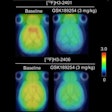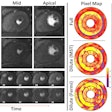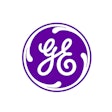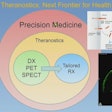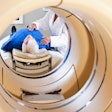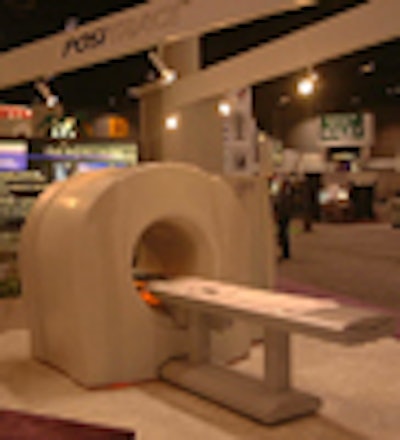
Could hybrid PET/CT imaging become the standard in nuclear medicine over the next several years? That's what executives at nuclear medicine vendor SMV America believe, thanks to results from their work-in-progress Positrace hybrid system, on display at last week's Society of Nuclear Medicine conference.
The rise of hybrid PET/CT imaging was evident at the St. Louis meeting, with several vendors displaying new systems that combine the functional data of nuclear medicine with anatomical information from CT. The companies hope that the combo units will lead to clinical advances and improved patient care, particularly in oncology imaging.
SMV first unveiled Positrace at last year's RSNA meeting. The product combines a CT system developed by Analogic of Peabody, MA, with SMV's PET technology. To keep costs down, Positrace uses sodium iodide (NaI) scintillation crystals rather than the more expensive bismuth germanate (BGO) crystals common in most PET cameras.
The first Positrace installation is at a clinic in Rennes, France, where the unit is producing excellent clinical images, according to Lonnie Mixon, vice president of worldwide marketing for the Twinsburg, OH, company. Clinical experience with the system has focused on imaging lung cancer, where it's been useful in visualizing very small nodules.
So positive is SMV's experience with the system that company executives believe PET scanning will always be performed in conjunction with CT in the not-so-distant future. "We are so impressed with the technology that we think it will become a standard," said Mixon. "The PET scanning is useful, but it's not as useful or definitive as it is with the CT perfectly registered."
Other companies jockeying with SMV in the PET/CT segment include Siemens Medical Systems of Hoffman Estates, IL, and GE Medical Systems of Waukesha, WI. Siemens is targeting the premium segment of hybrid imaging with its as-yet-unnamed PET/CT system; GE is taking a different tack, grafting an x-ray detector assembly onto a gamma camera capable of coincidence detection PET studies.
SMV hopes Positrace will claim the middle ground by presenting a fully diagnostic PET and CT combination that sells for less than $1 million. The company also plans to highlight the fact that Positrace comes with SMV's PowerStation image processing computer, which has been adapted to support PET studies. SMV believes PowerStation will prove more user-friendly than the research-oriented workstations currently offered with many PET cameras.
SMV is planning to install several more Positrace beta units in Europe by the end of 2000, with U.S. installations beginning in the fourth quarter of 2000 and first quarter of 2001. A 510(k) application with the U.S. Food and Drug Administration is awaiting clearance, Mixon said.
In other SMV developments, the company introduced a new single-head gamma camera, DSi, as a work-in-progress at the SNM meeting. The camera is a version of the vendor's dual-head DSTi system that users can upgrade to a dual-head at any time, Mixon said.
While the single-head market has lost some strength thanks to the rise of dual-head systems, the segment still makes up 30% to 35% of all nuclear medicine camera sales. DSi should prove popular among private nuclear cardiology labs that would like an upgrade path to dual-head, according to Mixon.
New cardiology quantification packages were also highlighted in SMV's booth. The vendor displayed new releases of the Cedars-Sinai Suite, Emory Cardiac Toolbox, and Wackers-Liu CQ, a new cardiac quantification protocol.
By Brian Casey
AuntMinnie.com staff writer
June 12, 2000
Related Reading
New single-head gamma camera among Marconi SNM highlights, June 8, 2000
GE takes on hybrid nuclear imaging with Hawkeye gamma camera add-on, June 7, 2000
SMV melds CT with PET, November 29, 1999
Let AuntMinnie.com know what you think about this story.
Copyright © 2000 AuntMinnie.com










